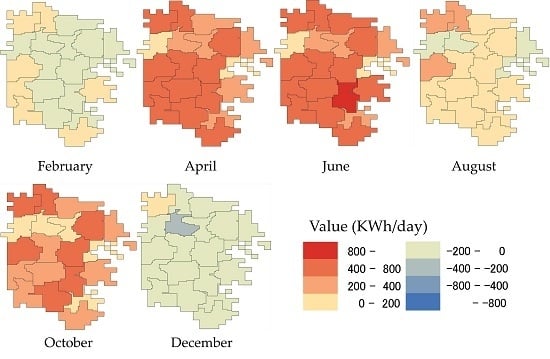Electricity Self-Sufficient Community Clustering for Energy Resilience
Abstract
:1. Introduction
2. EV and PV in Japan
3. Community Clustering for the V2C System
3.1. Problem Setting
3.2. Graph Partitioning Algorithms
- V = where Vi Vj = ø if i j,
- For every graph partition {G′1, G′2, …, G′n}, Og(G1, G2, …, Gn) ≤ Og(G′1, G′2, …, G′n),
- For every subgraph Gi, |w(Gi)| < k.
- The graph is split vertically or horizontally into two sub-graphs of nearly equal sizes.
- Step 1 is iterated for each sub-graph.
- Construct a smaller summarization of a graph by aggregating nodes and edges in the graph.
- Perform a graph partitioning procedure on the summarized graph.
- Propagate the computed partition back to the original graph.
- Repeat this process on the resulting partitions as needed.
3.3. Meta-Heuristic Optimization
- V = where Vi Vj = ø if i j,
- For every graph partition {G′1, G′2, …, G′n}, Os(G1, G2, ..., Gn) Os(G′1, G′2, ..., G′n).
- Set initial M sub-graphs (local communities), and calculate the cost Os = Os(G1, G2, ..., Gm).
- Detach a node ni from the corresponding subgraph Gi, and merge it into another subgraph G′i, then, calculate the cost O′s = Os(G′1, G′2, ..., G′m).
- If Os O′s, the change is accepted. Otherwise, the change is accepted with a probability, which is evaluated by exp{−(O′s − O s)/T}, where T is the cooling parameter that controls the acceptance probability.
- Iterate steps 2 and 3 alternately until O′s converges.
4. Energy Self-Sufficient Community Clustering in Yokohama, Japan
4.1. Estimation of Storage Sufficiency in Month m: wm(Gi)
4.1.1. Calculation of the Storage Capacity: C(Gi)
4.1.2. Calculation of the Potential PV Electricity Supply in Month m: Sm(Gi)
4.1.3. Calculation of the Electricity Demand in Month m: Dm(Gi)
4.1.4. Storage Availability in Month m: wm(Gi)
4.2. Comparison of Clustering Results
5. Concluding Remarks
Acknowledgments
Author Contributions
Conflicts of Interest
Abbreviations
| PV | Photovoltaic |
| EV | Electric Vehicle |
| V2C | Vehicle to Community |
| RCB | Recursive Coordinate Geometric Bisection |
| GRAPH | Multi-level Graph |
| SA | Simulated Annealing |
References
- Ackermann, T.; Andersson, G.; Soder, L. Distributed generation: A definition. Electr. Power Syst. Res. 2001, 57, 195–204. [Google Scholar] [CrossRef]
- Wolsink, M. The research agenda on social acceptance of distributed generation in smart grids: Renewable as common pool resources. Renew. Sustain. Energy Rev. 2012, 16, 822–835. [Google Scholar] [CrossRef]
- Hirabayashi, Y.; Mahendran, R.; Koirala, S.; Konoshima, L.; Yamazaki, D.; Watanabe, S.; Kim, H.; Kanae, S. Global flood risk under climate change. Nat. Clim. Chang. 2013, 3, 816–821. [Google Scholar] [CrossRef]
- Huang, J.; Jiang, C.; Xu, R. A review on distributed energy resources and MicroGrid. Renew. Sustain. Energy Rev. 2008, 12, 2472–2483. [Google Scholar]
- Nichols, D.K.; Stevens, J.; Lasseter, R. Validation of the CERTS MicroGrid concept the CEC/CERTS MicroGrid testbed. IEEE Power Eng. Soc. Gen. Meet. 2006. [Google Scholar] [CrossRef]
- Branker, K.; Pathak, M.J.M.; Pearce, J.M. A review of solar photovoltaic levelized cost of electricity. Renew. Sustain. Energy Rev. 2011, 15, 4470–4482. [Google Scholar] [CrossRef]
- Kempton, W.; Tomic, J. Vehicle-to-grid power fundamentals: Calculating capacity and net revenue. J. Power Sour. 2005, 144, 268–279. [Google Scholar] [CrossRef]
- Lund, H.; Kempton, W. Integration of renewable energy into the transport and electricity sectors through V2G. Energy Policy 2008, 36, 3578–3587. [Google Scholar] [CrossRef]
- Srivastava, A.K.; Annabathina, B.; Kamalasadan, S. The challenges and policy options for integrating plug-in hybrid electric vehicle into the electric grid. Electr. J. 2010, 23, 83–91. [Google Scholar] [CrossRef]
- Green, R.C.; Wang, L.; Alam, M. The impact of plug-in hybrid electric vehicles on distribution networks: A review and outlook. Renew. Sustain. Energy Rev. 2011, 15, 544–553. [Google Scholar] [CrossRef]
- Yamagata, Y.; Seya, H. Spatial electricity sharing system for making city more resilient against X-events. Innov. Supply Chain Manag. 2013, 7, 75–82. [Google Scholar] [CrossRef]
- Yamagata, Y.; Seya, H. Proposal for a local electricity-sharing system: A case study of Yokohama city, Japan. IET Intell. Transp. Syst. 2015, 9, 38–49. [Google Scholar] [CrossRef]
- Arizumi, N.; Minami, K.; Tanjo, T.; Maruyama, H.; Murakami, D.; Yamagata, Y. A first step towards resilient graph partitioning for electrical grids. In Proceedings of the 7th International Conference on Information and Automation for Sustainability, Colombo, Sri Lanka, 22–24 December 2014; pp. 1–6.
- Peterson, S.B.; Whitacre, J.F.; Apt, J. The economics of using plug-in hybrid electric vehicle battery packs for grid storage. J. Power Sour. 2010, 195, 2377–2384. [Google Scholar] [CrossRef]
- Zhang, Q.; Tezuka, T.; Ishihara, K.N.; Mclellan, B.C. Integration of PV power into future low-carbon smart electricity systems with EV and HP in Kansai Area, Japan. Renew. Energy 2012, 44, 99–108. [Google Scholar] [CrossRef]
- Nissan Motor Co., Ltd. Available online: http://www.nissan.co.jp/EN/ (accessed on 13 July 2016).
- World Energy Council. Available online: https://www.worldenergy.org (accessed on 13 July 2016).
- Next Generation Vehicle Promotion Center. Available online: http://www.cev-pc.or.jp/english/ (accessed on 13 July 2016).
- Ling, A.P.A.; Sugihara, K.; Mukaidono, M. The Japanese smart grid initiatives, investments, and collaborations. Int. J. Adv. Comput. Sci. Appl. 2012, 3, 44–54. [Google Scholar]
- Automobile Inspection and Registration Information Association. Available online: https://www.airia.or.jp/ (accessed on 13 July 2016). (In Japanese)
- Japan Photovoltaic Energy Association. Available online: http://www.jpea.gr.jp/en/greeting/index.html (accessed on 13 July 2016).
- Berger, M.J.; Bokhari, S.H. A partitioning strategy for nonuniform problems on multiprocessors. Comput. IEEE Trans. 1987, 36, 570–580. [Google Scholar] [CrossRef]
- Bui, T.N.; Jones, C. A heuristic for reducing fill-in in sparse matrix factorization. Proc. Parallel Process. Sci. Comput. 1993, 1, 445–452. [Google Scholar]
- Hendrickson, B.; Leland, R. Multidimensional Spectral Load Balancing. U.S. Patent 5,587,922, 24 December 1996. [Google Scholar]
- Karypis, G.; Kumar, V. Metis-Unstructured Graph Partitioning and Sparse Matrix Ordering System, 2nd ed.; University of Minnesota: Mineapolis, MN, USA, 1995. [Google Scholar]
- Kirkpatrick, S.; Gelatt, C.D., Jr.; Vecchi, M.P. Optimization by simulated annealing. Science 1983, 220, 671–680. [Google Scholar] [CrossRef] [PubMed]
- Openshaw, S. Optimal zoning systems for spatial interaction models. Environ. Plan. A 1977, 9, 169–184. [Google Scholar] [CrossRef]
- Martin, D. Extending the automated zoning procedure to reconcile incompatible zoning systems. Int. J. Geogr. Inf. Sci. 2003, 17, 181–196. [Google Scholar] [CrossRef]
- The Multi-Agent Transport Simulation MATSim; Horni, A.; Nagel, K.; Axhausen, K.W. (Eds.) Ubiquity: London, UK, 2016.
- Itagaki, A.; Okamura, H.; Yamada, M. Preparation of meteorological data set throughout Japan for suitable design of PV systems. In Proceedings of the 3rd World Conference on Photovoltaic Energy Conversion, Osaka, Japan, 18 May 2003; pp. 2074–2077.
- Seifoddini, H.; Djassemi, M. The production data-based similarity coefficient versus Jaccard’s similarity coefficient. Comput. Ind. Eng. 1991, 21, 263–266. [Google Scholar] [CrossRef]
- Bishop, C. Pattern Recognition and Machine Learning; Springer-Verlag: New York, NY, USA, 2007. [Google Scholar]
- Quan, S.J.; Li, Q.; Augenbroe, G.; Brown, J.; Yang, P.P.J. Urban data and building energy modeling: A GIS-based urban building energy modeling system using the urban-EPC engine. Plan. Support Syst. Smart Cities 2015, 24, 447–469. [Google Scholar]
- Li, Z.; Quan, S.J.; Yang, P.P.J. Energy performance simulation for planning a low carbon neighborhood urban district: A case study in Macau. Habitat Int. 2016, 53, 206–214. [Google Scholar] [CrossRef]
- Yamagata, Y.; Murakami, D.; Yoshida, T.; Seya, H.; Kuroda, S. Value of urban views in a bay city: Hedonic analysis with the spatial multilevel additive regression (SMAR) model. Landsc. Urban Plan. 2016, 151, 89–102. [Google Scholar] [CrossRef]

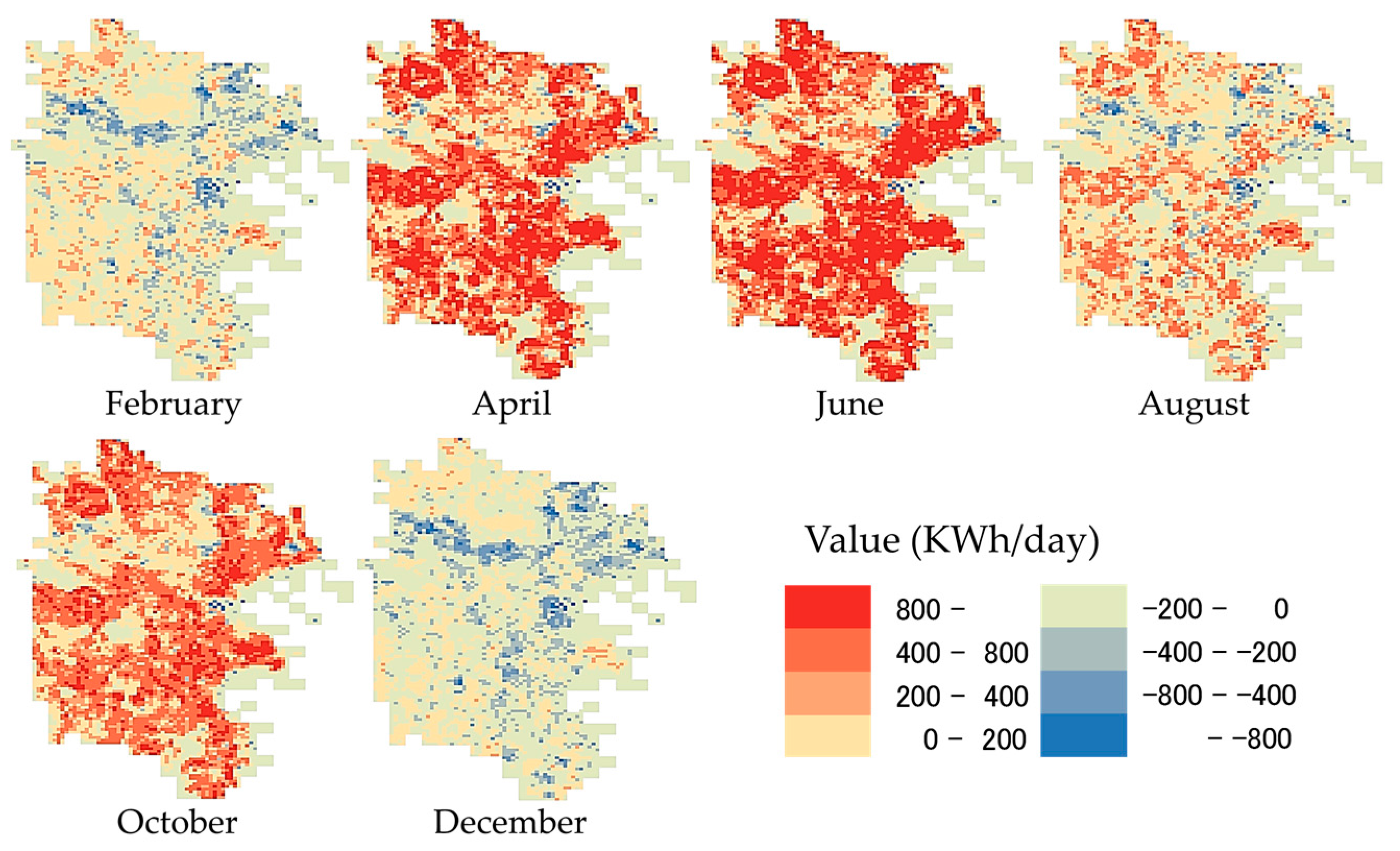
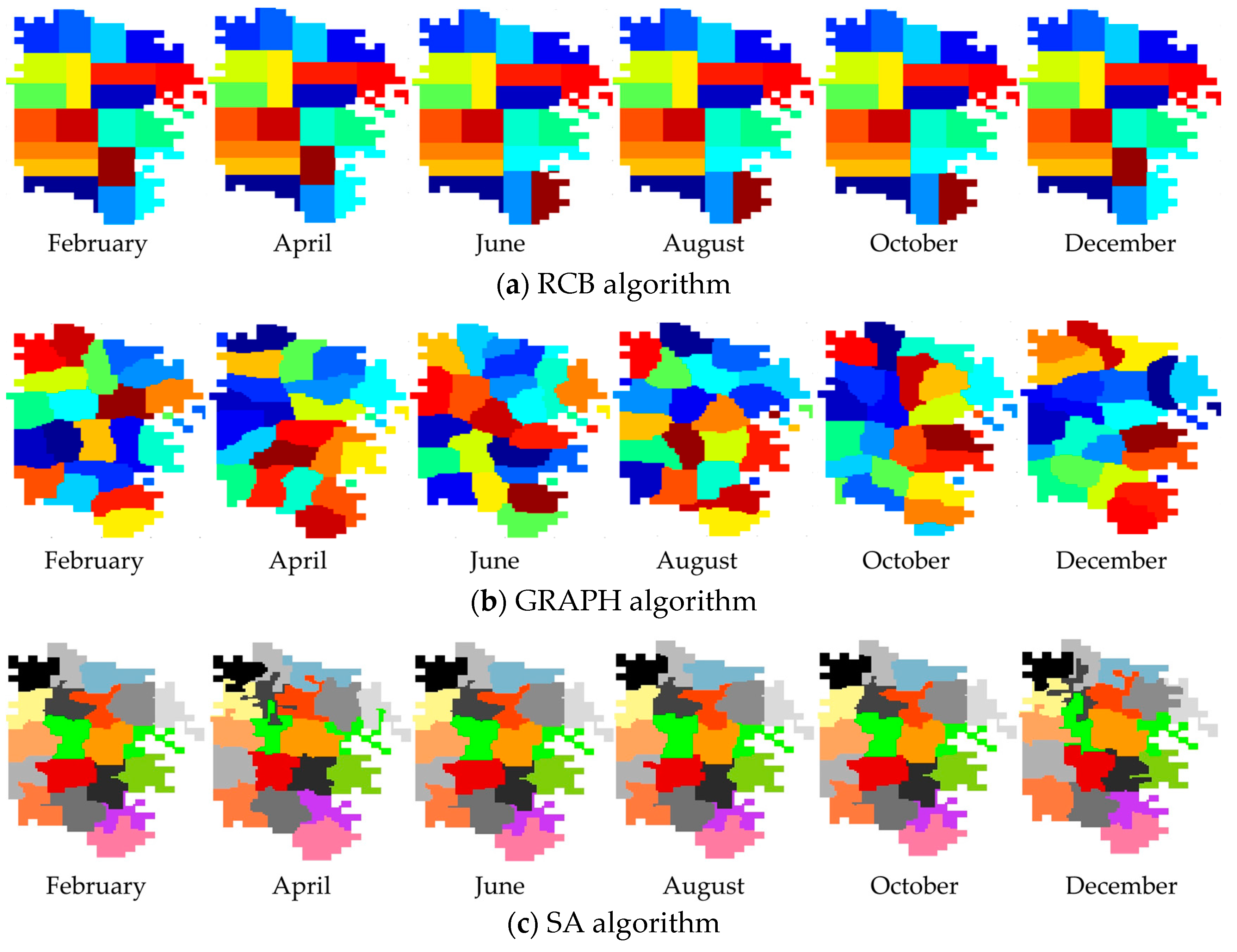
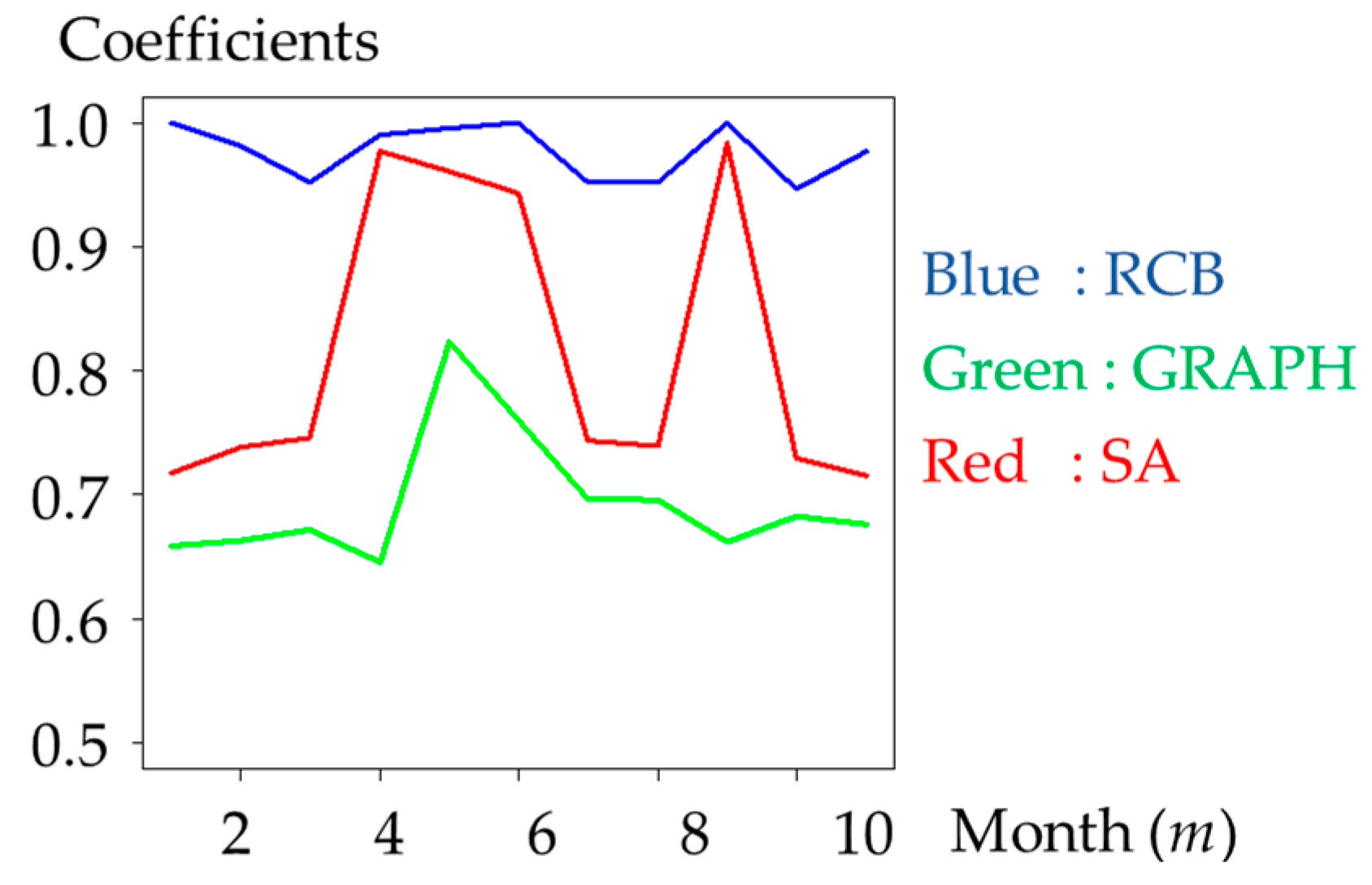

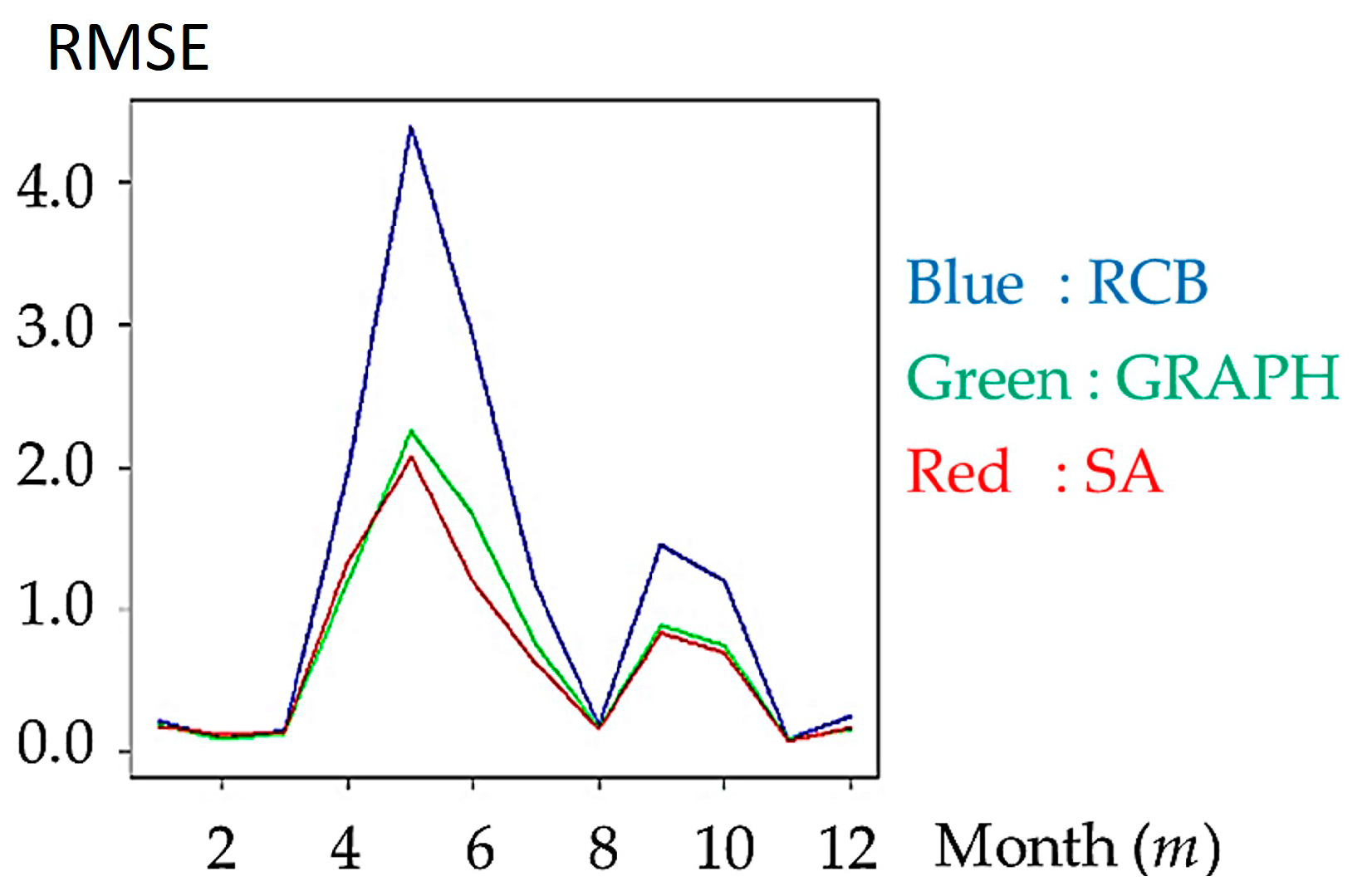
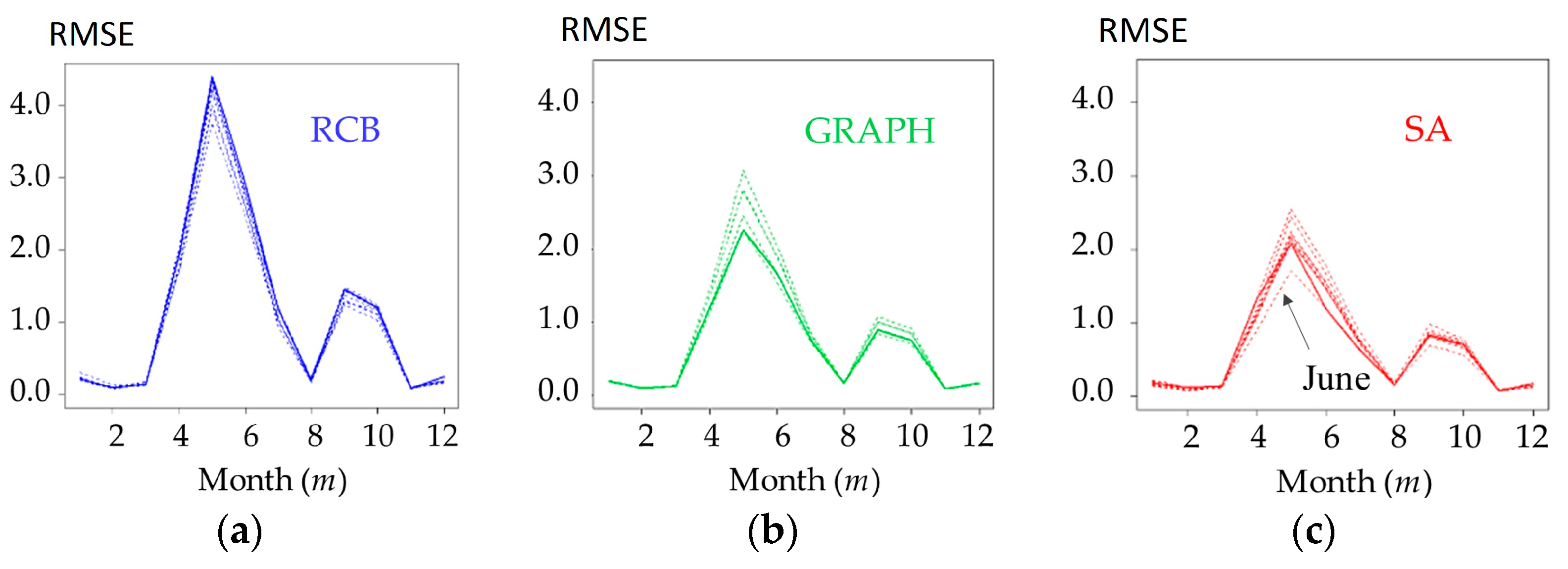
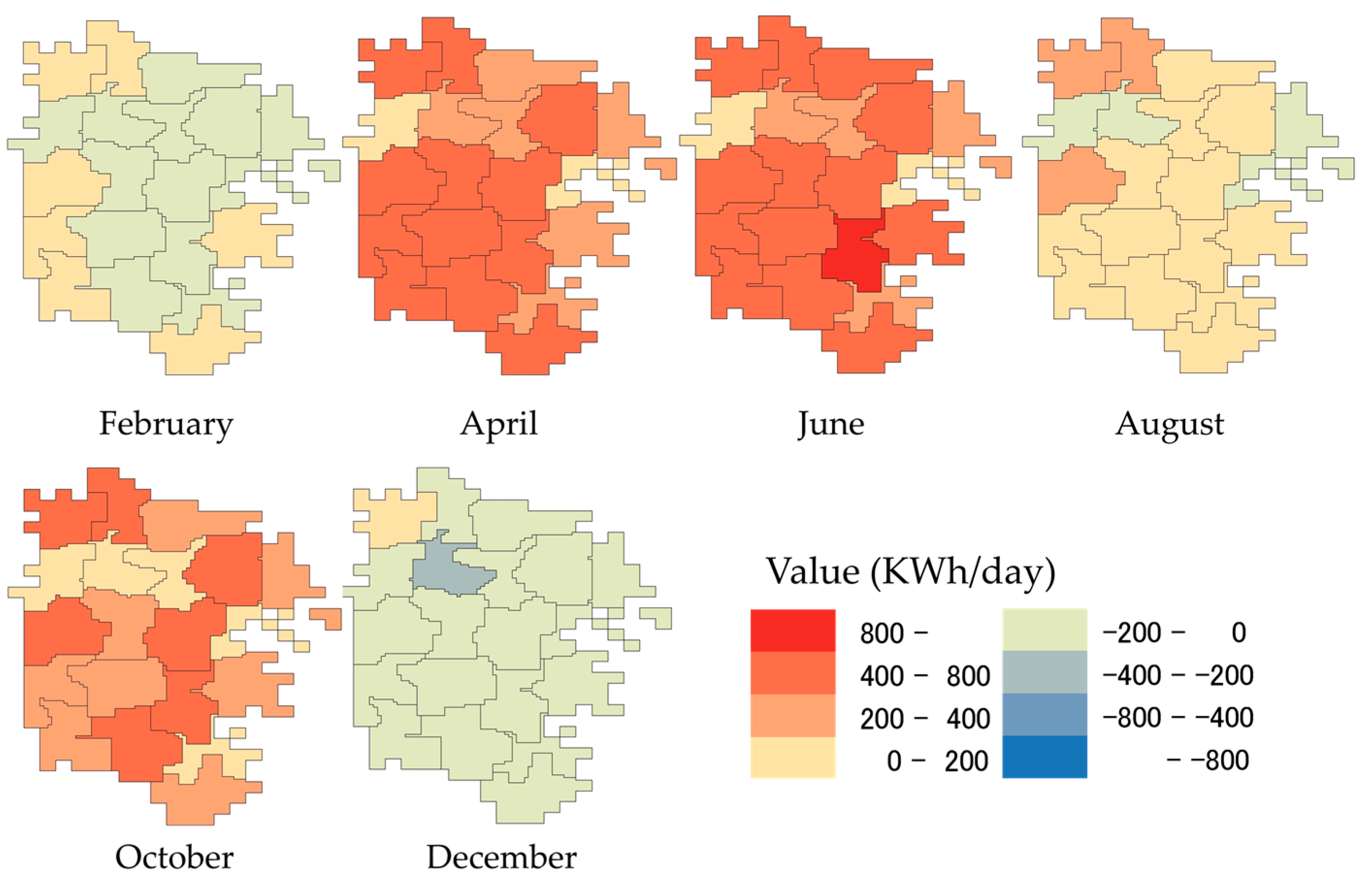
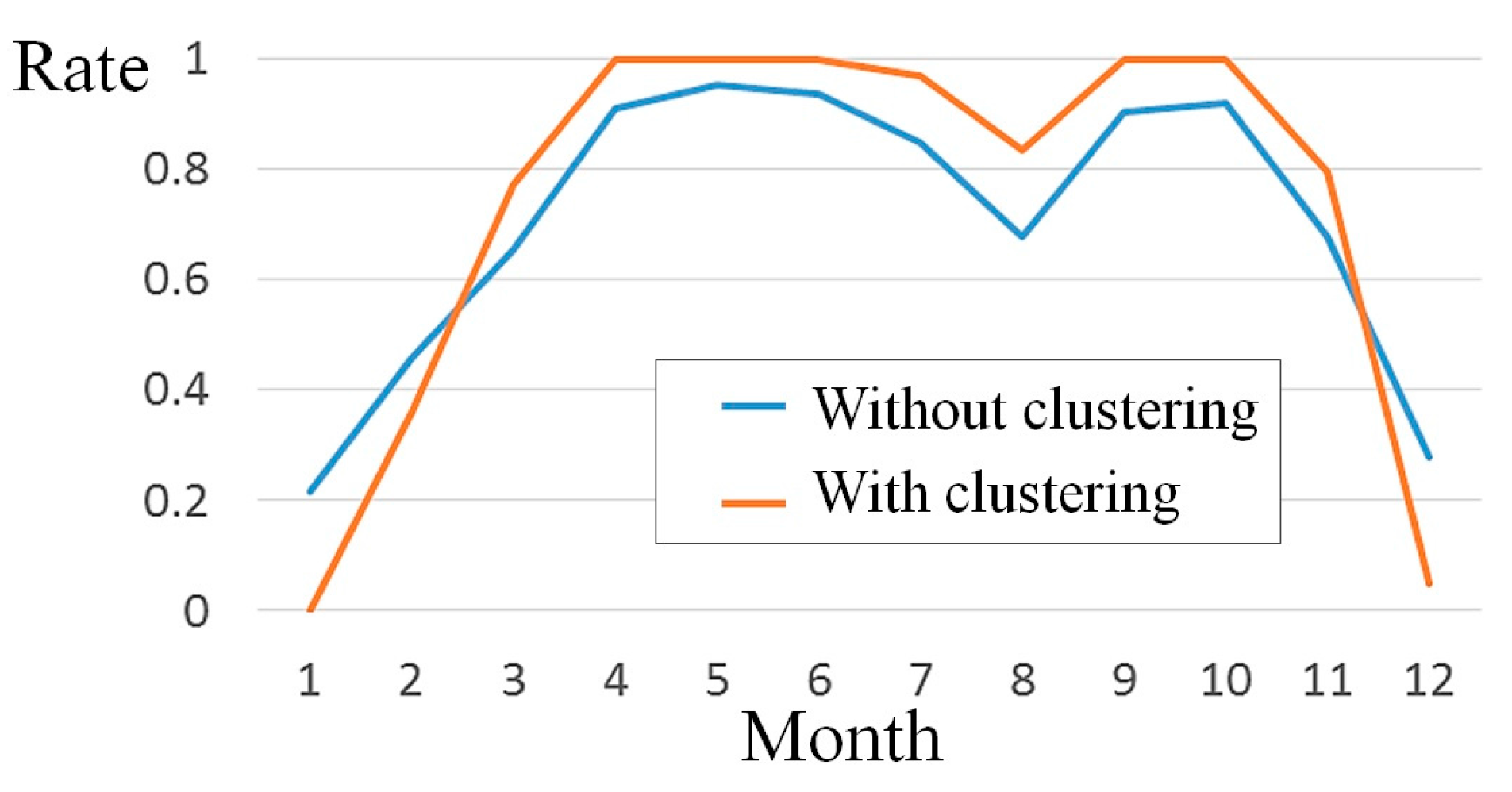
© 2016 by the authors; licensee MDPI, Basel, Switzerland. This article is an open access article distributed under the terms and conditions of the Creative Commons Attribution (CC-BY) license (http://creativecommons.org/licenses/by/4.0/).
Share and Cite
Yamagata, Y.; Murakami, D.; Minami, K.; Arizumi, N.; Kuroda, S.; Tanjo, T.; Maruyama, H. Electricity Self-Sufficient Community Clustering for Energy Resilience. Energies 2016, 9, 543. https://doi.org/10.3390/en9070543
Yamagata Y, Murakami D, Minami K, Arizumi N, Kuroda S, Tanjo T, Maruyama H. Electricity Self-Sufficient Community Clustering for Energy Resilience. Energies. 2016; 9(7):543. https://doi.org/10.3390/en9070543
Chicago/Turabian StyleYamagata, Yoshiki, Daisuke Murakami, Kazuhiro Minami, Nana Arizumi, Sho Kuroda, Tomoya Tanjo, and Hiroshi Maruyama. 2016. "Electricity Self-Sufficient Community Clustering for Energy Resilience" Energies 9, no. 7: 543. https://doi.org/10.3390/en9070543
APA StyleYamagata, Y., Murakami, D., Minami, K., Arizumi, N., Kuroda, S., Tanjo, T., & Maruyama, H. (2016). Electricity Self-Sufficient Community Clustering for Energy Resilience. Energies, 9(7), 543. https://doi.org/10.3390/en9070543





